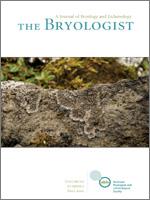The lichen flora of southeast Alaska has been explored for over 100 years, but remains poorly known. In the first survey of its kind from the region, we report 766 taxa of lichens and lichenicolous fungi from the Klondike Gold Rush National Historic Park. Coming from a park only 53 km2 in size, this represents one of the largest numbers of lichenized and lichenicolous fungi per unit area ever reported and the largest number ever reported from any United States National Park of any size. One lichen genus, four lichen species and one species of lichenicolous fungus are described as new to science: Steineropsis alaskana gen. et sp. nov. (Peltigerales), Coccotrema hahriae and Pertusaria mccroryae (both Pertusariales), Stereocaulon klondikense (Lecanorales) and Corticifraga scrobiculatae (Lecanoromycetes incertae sedis). The new combinations Coccotrema minutum and Nesolechia fusca are made and Parmelia elongata is reduced to synonymy under Hypogymnia duplicata. Seventy-five taxa could not be assigned a species name at this time and represent a pool of critical and/or potentially undescribed taxa. Thirty-four taxa are new or confirmed for North America, including seventeen lichen taxa, one species of saprophytic Dothideomycetes, and sixteen species of lichenicolous fungi. Five taxa of eastern North American distribution are reported for the west for the first time. A total of 196 taxa are new for Alaska. We report the presence of novel secondary chemical compounds in Bryoria, Cladonia, Hypogymnia and Pertusaria. Based on a Chao analysis of single and two-time occurrences we estimate we have captured not more than 83% of the macrolichen and 64% of the microlichen flora, with the total flora likely exceeding 1000 taxa. We provide an overview of the lichen inventories with highest species number worldwide and discuss the Klondike in the context of broader patterns in lichen richness. Global models of climate change in the coming century are unanimous in predicting greater temperature increases at higher latitudes than at low latitudes. We hope that our data will lead to a reconsideration of the potential extent of biodiversity at high latitudes.
How to translate text using browser tools
1 September 2010
Lichens and lichenicolous fungi of the Klondike Gold Rush National Historic Park, Alaska, in a global biodiversity context
Toby Spribille,
Sergio Pérez-Ortega,
Tor Tønsberg,
Dave Schirokauer
ACCESS THE FULL ARTICLE

The Bryologist
Vol. 113 • No. 3
Fall 2010
Vol. 113 • No. 3
Fall 2010
Chao formula
chemistry
climate change
diversity estimation
floristics
high latitude
Lecanorales




